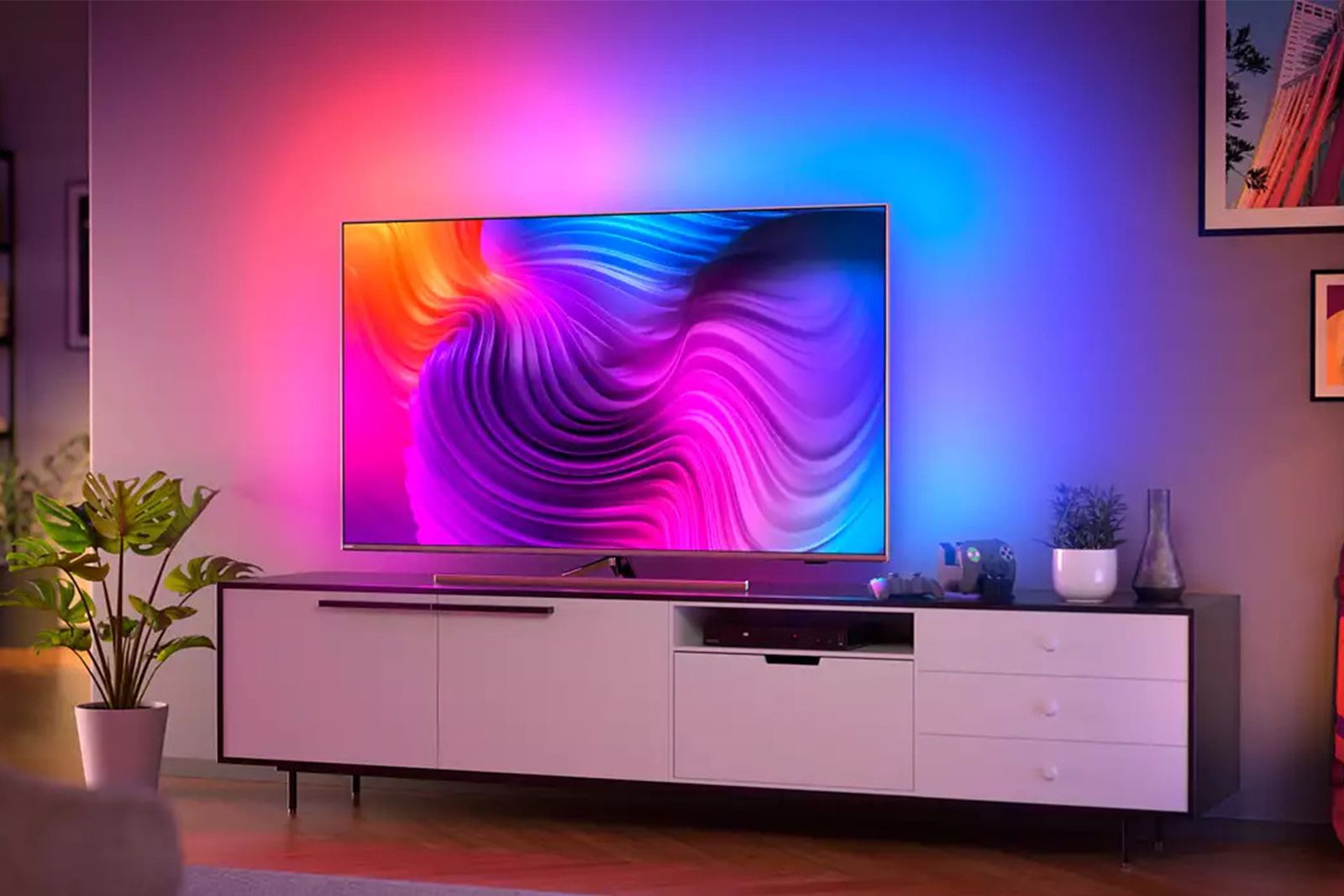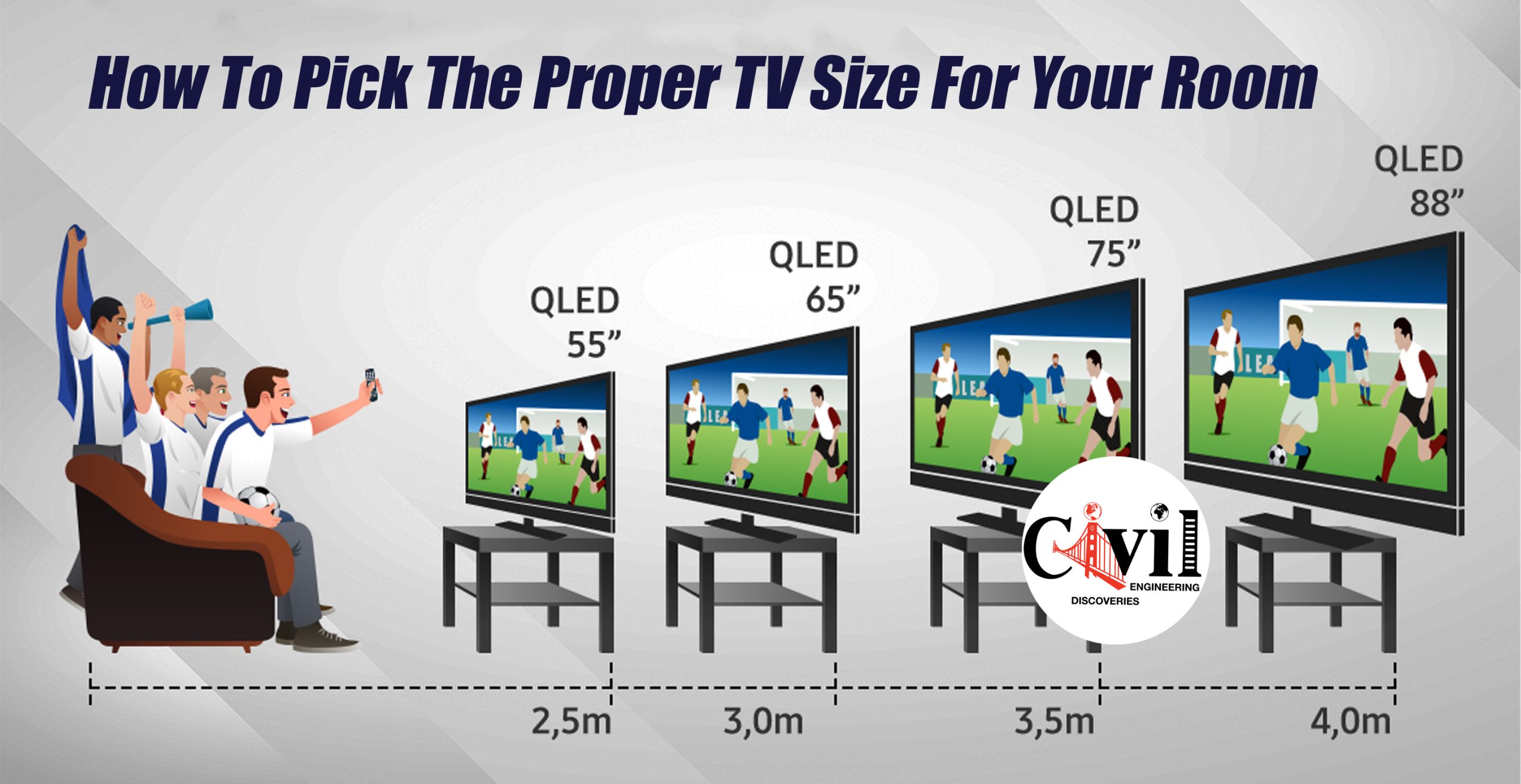Choosing the Right Size and Resolution

Selecting the perfect TV size and resolution for your bedroom is crucial for an immersive and enjoyable viewing experience. The size should complement your room dimensions and viewing distance, while the resolution dictates the level of detail and clarity you’ll see on screen. Let’s explore the factors to consider when making these decisions.
Screen Size and Viewing Distance
The ideal screen size for your bedroom depends on the room’s size and the typical viewing distance. A general rule of thumb is to choose a TV size that’s roughly equal to the viewing distance in inches. For instance, if you’re sitting 8 feet (96 inches) away from the TV, a 55-inch screen would be a good starting point.
However, this is just a guideline. Consider these factors:
- Room Size: A larger bedroom can accommodate a bigger TV, while a smaller room might necessitate a smaller screen to avoid feeling overwhelmed.
- Viewing Distance: If you sit closer to the TV, a smaller screen might be sufficient. Conversely, a larger screen is ideal for those who prefer to sit further away.
- Personal Preference: Ultimately, the ideal size is subjective and depends on your individual preferences.
Resolution and Picture Quality
Resolution refers to the number of pixels that make up an image. Higher resolution means more pixels, resulting in sharper and more detailed images. Here’s a breakdown of common resolutions:
- 4K (3840 x 2160 pixels): 4K offers significantly improved detail and clarity compared to 1080p. It’s the standard for most modern TVs and delivers an excellent viewing experience for most bedroom setups.
- 8K (7680 x 4320 pixels): 8K boasts even more pixels than 4K, leading to incredibly sharp and lifelike images. However, 8K content is still limited, and the technology is relatively new, making it a pricier option. It’s suitable for large bedrooms and those who want the absolute best picture quality.
Screen Technology
Different screen technologies impact picture quality, viewing angles, and overall performance. Here’s a comparison of common screen technologies:
- OLED (Organic Light-Emitting Diode): OLED TVs offer exceptional picture quality with perfect blacks, infinite contrast, and wide viewing angles. They’re known for their vibrant colors and stunning visuals. However, they can be more expensive than other options and might experience burn-in issues if static images are displayed for extended periods.
- QLED (Quantum Dot LED): QLED TVs utilize quantum dots to enhance color accuracy and brightness. They offer excellent picture quality, especially in well-lit rooms. While not as deep black as OLED, QLED TVs provide a vibrant and immersive viewing experience.
- LCD (Liquid Crystal Display): LCD TVs are the most affordable option. They offer decent picture quality, but their blacks might not be as deep as OLED or QLED. They also tend to have less vibrant colors and narrower viewing angles.
Smart Features and Operating Systems

In the intimate setting of a bedroom, a smart TV goes beyond just a screen; it becomes a hub for entertainment, information, and even relaxation. Choosing the right smart features and operating system is crucial to create a personalized and enjoyable experience.
Best smart tv for a bedroom – Let’s explore the key smart TV features that are most relevant for a bedroom environment, delve into the nuances of popular smart TV operating systems, and understand how a user-friendly remote control can elevate the overall experience.
Streaming Services
Streaming services are the heart of a smart TV’s entertainment capabilities, offering access to a vast library of movies, TV shows, and music. For a bedroom, where you might want to unwind after a long day, having a wide selection of streaming services is crucial.
- Netflix, Hulu, Amazon Prime Video: These are the industry giants, offering a diverse catalog of content, including original series, movies, and documentaries. They are essential for any smart TV, especially in a bedroom setting where you might want to relax and binge-watch your favorite shows.
- Disney+, HBO Max, Apple TV+: These services cater to specific niches. Disney+ offers a treasure trove of family-friendly content, including Disney classics, Pixar movies, Marvel shows, and Star Wars series. HBO Max features premium HBO programming, along with a diverse library of movies and shows. Apple TV+ is gaining traction with its original content and focus on quality storytelling.
- YouTube, Twitch, Spotify: Beyond movies and TV shows, these platforms offer a wealth of entertainment, including music, gaming streams, and educational content. YouTube is a versatile platform for both entertainment and information, while Twitch is popular for live gaming streams. Spotify provides a vast library of music, podcasts, and audiobooks, perfect for setting the mood or listening to relaxing sounds while you wind down.
Voice Control
Voice control is becoming increasingly popular in smart TVs, offering a hands-free way to navigate menus, search for content, and control playback. This is particularly useful in a bedroom, where you might want to relax on the bed and avoid reaching for the remote.
- Amazon Alexa, Google Assistant, Siri: These voice assistants are integrated into many smart TVs, allowing you to control your TV with simple voice commands. You can say things like “Play the latest episode of Stranger Things on Netflix” or “Turn the volume down.” Voice control can also be used to control other smart home devices, like lights and thermostats, creating a seamless and convenient experience.
App Compatibility
Beyond streaming services, a smart TV’s app compatibility expands its functionality and allows you to customize the experience to your liking.
- Gaming Apps, Social Media, News Apps: Smart TVs can be used for more than just watching movies and TV shows. Gaming apps allow you to enjoy casual games or even stream games from your console. Social media apps let you stay connected with friends and family, while news apps keep you updated on current events. Having a wide selection of apps ensures that your smart TV is a versatile entertainment and information hub.
Operating Systems
The operating system (OS) is the software that powers your smart TV, determining its user interface, app selection, and overall functionality. Choosing the right OS is important for a smooth and enjoyable bedroom experience.
Android TV
Android TV is a popular smart TV OS, known for its vast app selection and compatibility with Google services.
- Strengths: Android TV offers a familiar and intuitive interface for Android users, with a focus on content discovery and personalized recommendations. Its large app selection includes popular streaming services, gaming apps, and productivity tools. The integration with Google services like Google Assistant and Chromecast makes it easy to control your TV with your voice or cast content from your phone.
- Weaknesses: While Android TV has a large app selection, some apps may not be optimized for the TV interface, resulting in a clunky or slow experience. Some users find the interface cluttered and overwhelming, especially for casual users.
Roku TV
Roku TV is another popular choice, known for its simplicity and user-friendly interface.
- Strengths: Roku TV is praised for its intuitive and straightforward interface, making it easy for anyone to navigate and find content. It boasts a vast library of streaming services, including niche channels and live TV options. Roku TV is also known for its fast performance and smooth streaming experience.
- Weaknesses: Roku TV’s interface may feel too basic for some users, lacking the advanced features and customization options found in other OSes. The app selection is good, but not as extensive as Android TV. It also lacks some features like multi-account support and the ability to download apps from external sources.
webOS
webOS is the smart TV OS developed by LG, known for its unique user interface and focus on content discovery.
- Strengths: webOS is known for its sleek and modern design, with a user-friendly interface that is easy to navigate. It features a “Magic Remote” that allows you to control your TV with gestures and voice commands. webOS also offers a wide selection of streaming services and apps, including popular gaming options.
- Weaknesses: webOS’s app selection is not as extensive as Android TV or Roku TV. It may not be as familiar to users who are accustomed to other operating systems. The interface can be a bit overwhelming for casual users.
Tizen
Tizen is the smart TV OS developed by Samsung, known for its focus on features and customization.
- Strengths: Tizen offers a wide range of features and customization options, including multi-account support, advanced picture settings, and integration with Samsung’s smart home ecosystem. It also has a large app selection, including popular streaming services and gaming apps. Tizen is known for its smooth performance and fast loading times.
- Weaknesses: Tizen’s interface can be a bit cluttered and overwhelming for casual users. It can also be challenging to navigate for those unfamiliar with Samsung’s interface. Some features, like multi-account support, may not be available on all Tizen TVs.
Remote Control, Best smart tv for a bedroom
A user-friendly remote control is essential for a positive smart TV experience, especially in a bedroom setting.
- Backlit Buttons, Voice Control, Motion Control: Backlit buttons make it easier to navigate the TV in a dark room. Voice control allows you to search for content and control playback without lifting a finger. Motion control, often found on more advanced remotes, allows you to control the TV with gestures, providing a more intuitive and engaging experience.
Sound Quality and Audio Features: Best Smart Tv For A Bedroom

While a stunning picture is essential for a bedroom TV, a great sound experience can elevate your viewing pleasure to a whole new level. You’ll want to consider several factors to ensure your bedroom TV delivers clear, immersive audio that complements your movie nights and TV shows.
Speaker Placement and Sound Modes
Speaker placement plays a crucial role in creating a balanced and immersive soundstage. Many modern TVs feature built-in speakers that are strategically placed to deliver a wide sound field. However, the quality of these speakers can vary greatly. Some TVs offer dedicated sound modes, such as “Movie,” “Music,” or “News,” which optimize the audio settings for different content types. These modes often adjust the volume levels, bass response, and treble to enhance specific aspects of the audio. For example, “Movie” mode might emphasize the bass frequencies to create a more immersive cinematic experience, while “Music” mode might prioritize clarity and detail for a more natural sound.
Dolby Atmos and DTS:X
Dolby Atmos and DTS:X are advanced audio technologies that deliver immersive, three-dimensional sound experiences. They create a sense of height and depth by using multiple speakers to create a surround-sound effect. These technologies are particularly well-suited for action-packed movies and video games, where the sound effects are designed to be spatially accurate and realistic. Imagine the sound of a helicopter flying overhead or the roar of a crowd in a stadium – these technologies bring these sounds to life with remarkable clarity and precision.
Soundbars and External Speakers
For an even more immersive and powerful sound experience, you can consider investing in a soundbar or external speakers. Soundbars are a popular choice for bedroom TVs as they offer a compact and stylish solution for enhancing audio quality. Many soundbars come with dedicated subwoofers for deep, impactful bass, and some even feature Dolby Atmos or DTS:X support for a truly cinematic experience. External speakers, on the other hand, offer greater flexibility in terms of placement and configuration. You can choose from a wide range of speakers, including bookshelf speakers, tower speakers, and even wireless speakers, to create a custom audio system that perfectly complements your bedroom setup.
